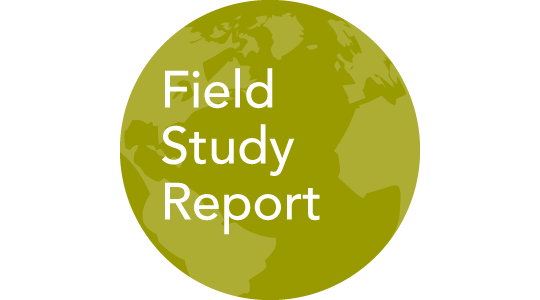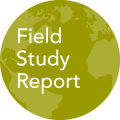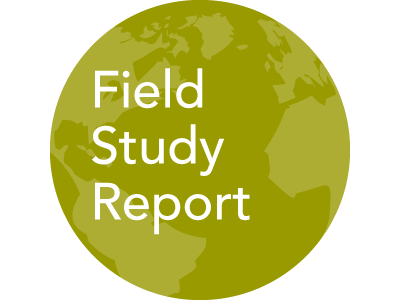TEXT BY ルセフ キリル
研究科:人間科学研究科
専攻:人間科学専攻
専門分野:比較文明学
Philippines Rising:
Impressions from a Field Trip to Manila and Cebu
My visit to the Philippines was in many aspects a shocking experience. It was hard to imagine that the country has been until recently mocked as the “sick man of Asia”, as everywhere it is experiencing an unprecedented construction book.
As a researcher on economic history and a person particularly interested in economic growth and industrialization, the field trip to the Philippines gave me a lot of material to think about and I managed to observe directly the processes of economic modernization and development. Visiting both the rich commerce areas in Manila and Cebu and also some poor slum places while on the field trip, I attempted to analyze the economic situation of the country at the moment.
I was easy to notice that the increase in skyscrapers is owned partly to the business process outsourcing industry, whose growth has helped to raise income levels for a part of the population and boost personal spending. Having a large number of hardworking and English-speaking workers, the country is achieving high growth in the sector.
Call centers have been the most prominent type of operation, but businesses in other country are also outsourcing clerical jobs such as medical record-keeping as well as surveys and data processing.
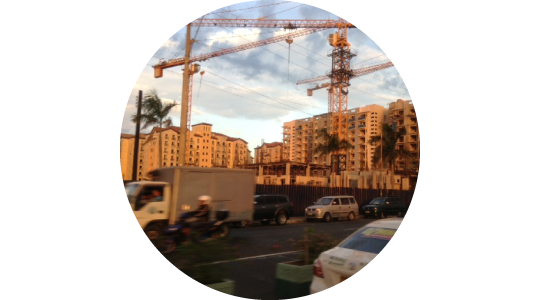
The Philippines have already overtaken India as the world’s biggest outsourcing center. A growing number of foreign firms are having their data processing and other clerical work performed there. As some of the students I talked to explained the newly opened business centers in the greater Manila area and other major cities function as key bases for global operations and are bringing a lot of capital and foreign manager in the country. The industry is also creating a lot of new job for the local people. I was told that this year around 700 000 people are employed in the sector and the figure is expected to increase to 1.3 million by 2016. Also the average monthly wage for entry-level workers is around 15000 pesos, higher than wages in manufacturing and other sectors. This is helping to raise income levels and boost domestic consumption.
However, apart from the outsourcing job positions and the flow of capital from overseas workers, the country’s growth is also boosted by higher personal consumption. It was noticeable that the Philippines have become target of several Japanese companies as well. The raised income levels and the expanded middle class is giving opportunities to foreign firms to penetrate the market.
Particularly, demographics play important role in this brighter economic future. I believe that the young and growing population of the Philippines could continue to boost economic growth for years to come. It is set to surpass 100 next year, according to the International Monetary Fund, making the country the second most populous in the ASEAN region after Indonesia. It was easy to notice that this specific state of demographics give the Philippines a working-age population that outnumbers children and aged, a sharped contrast to Japan, which is already experiencing the negative effects of an aging population. However, I also think that while it presents the possibility of strong domestic consumption, it could also grad down the economic growth if the country fails to create sufficient number of job opportunities.
Another interesting fact that I would like to point out is the overall positive view on the current administration of the President Benigno Aquino III, which was noticeable both among the students I talked to in during the university visits, but also among common people. Much of the credit for the starkly improved performance of the country actually goes to “Noynoy” Aquino, a fourth-generation politician whose election to the presidency in May 2010 has proved an important change.
Being the eldest song of the late Senator Benigno Aquino Jr. and the President Corazon Aquino, he was also a graduate of the prestigious Ateneo de Manila University, our partner university during the field trip. It seemed that there was a general understanding that his leadership is changing the long-held negative tendencies about his country.
Going back in history, before becoming the “sick man of Asia”, the Philippines were actually a high achiever. However, the country’s economy declined during the long dictatorship of Ferdinand Marcos. The three decades of his rule are remembered for the spread of corruption and the enlargement of the foreign debt. While the country struggled with domestic problems its economy was overtaken by the neighboring countries.
The new administration has been focusing on tackling the corruption. Although few were the people I talked to who actually believed that corruption in the Philippines will ever disappear, President Aquino has been trying to eradicate corrupt politicians and the charges given against his predecessor has been widely considered a significant move. He has led a battle against tax evasion, pursuing several high-profile cases even among the elite normally able to evade the law. I learned that the tax collection has risen by about 2 per cent of GDP without new taxes.
Another controversial law that the president singed was the family planning law, which was also the topic of some of out debates with the Ateneo students during our workshop. The Roman Catholic Church and other conservative groups had been opposing legislation that allows contraception, but Aquino went ahead with the conviction that reducing poverty is essential for economic growth. The law allows the government to distribute contraceptives to the poor and expand sex education. It has been said that opposition to birth control in this largely Catholic country has contributed to poverty.
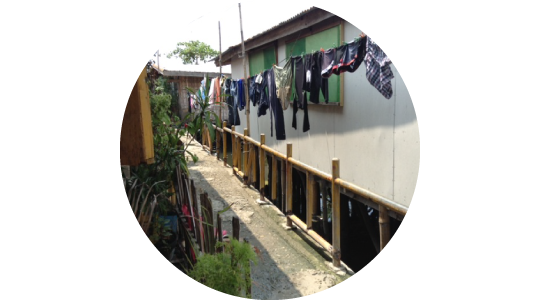
Also, a topic that was particularly interesting for me and some of the other students from the group was the security situation in the country. We managed to hear some stories about the current problems with Muslim minority in the southern provinces. The recent establishment of peace with the Islamic militants was considered as an important historic turning point for the Philippines by many of the students I communicated with.
About 90% of the Filipinos are Christians, but we learned that Muslims were living on the southern island of Mindanao even before Spanish rule began in the 16th century. Muslims have resisted Christian settles, claiming that they have been stealing land from them. The current conflicts escalated around 1970 and fighting between the Manila government and the Islamic militants has continued for decades.
However, in October 2012 the government and the influential Moro Islamic Liberation Front agreed to start peace talks that would lead to the establishment of an autonomous Muslim government in parts of Mindanao. According to some of the students who came form there, the fighting have kept the island as the poorest part of the country for years, although it has rich reserves of gold, nickel and other resources. Peace could attract foreign investment and development.
As a conclusion for the situation in the country, I could saw that with the growing stability in the political climate, foreign investors are increasing their direct investment in the Philippines. Credit rating agencies also started to recognize the country’s fiscal efforts. If the current administration continues its fight against corruption, poverty and conflicts, the country will be able to enter a new phase of continuous growth. The country is coming back on its feet. To ensure that its economic revival will not be short-lived, it needs to attract foreign manufacturers and nurture industries to reduce its dependence on the outsourcing industry and overseers remittances. Also, in order to reduce poverty – still a reality for about 30% of the population – further economic growth and job creation will be essential.




